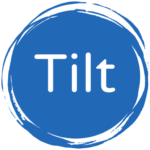Case study: From isolation to collaboration
How agile working improved efficiencies and improved staff well-being.
Agile ways of working are often implemented to deliver more impact, but there are more benefits beyond improved speed and effectiveness. In this case study, we see how a switch to agile working broke down silos, enhanced collaboration, and significantly increased the well-being of Amnesty International UK’s Human Rights Education team.
The context
The Human Rights Education team at Amnesty UK supports people of all ages to increase their understanding of human rights in a variety of creative ways. The team was high-performing, and its staff highly committed, but as the Team Manager, Rowena (Ro) Seabrook, put it:
In nearly 20 years of managing teams, I’ve never had a period where it hasn’t been a roller coaster.
There were areas in need of improvement, and Ro was keen to find ways to better support her staff team who were continually working under pressure. Ro asked Tilt to help her with these efforts, having seen how they had supported Amnesty’s Comms team to make significant improvements (which you can read about here).
Since this, Ro has joined Tilt as an Agile Coach and the Agile in Action course leader. You can find out more about her here.
Now, back to the story…
The Challenges
Staff were often individually responsible for large and complex workloads, which could not easily be shared amongst the wider team. This led to a number of problems:
- A lack of cross-team transparency:
Staff were so busy with their own individual projects that they had no time (or means) to easily find out what their colleagues were working on, leaving them feeling isolated and reducing opportunities for professional growth. - Project inefficiencies:
Siloed working also dictated that staff could not easily ask for support with tasks, or to pick up each other’s workloads in times of sickness or annual leave, resulting in projects stalling until the staff member returned to work. - Diminished staff well-being:
Being a highly conscientious team unable to share the burden of their busy workloads, staff well-being began to suffer.


We were working really in silos. We had these very effective education programs, […] but we didn’t know each other’s work well enough. What that meant was, if you were looking to take annual leave or had health issues […] your projects are just not happening. And there is a lot of guilt associated to that. So it does mean that we’re maybe losing our leave at the end of the year, or not taking sick leave, or doing things for our well-being as we should.


Shoomi Chowdhury
Human Rights Education TEam
The Curveball
Just as Ro was exploring the option of agile working to address these concerns, Covid-19 struck.
How we delivered our work changed overnight. We moved to remote working. So by the time we actually started agile working the team articulated wanting to feel more connected to each other. Because they were quite siloed projects that people were working on. Most importantly of all, everybody was like: ‘we want to recentre our well-being’ because it was such a time of dramatic change and challenge. (Rowena)
The team at Tilt guided Ro and colleagues to lay the foundations for agile working. Together, Ro’s team:
- Identified key challenges and areas for development.
- Created a set of clear, measurable goals aimed at tackling these challenges.
- Agreed on a range of strategies to help achieve their goals.
- Implemented these strategies using agile working methods.
The team initially selected one small, achievable goal to test out agile ways of working. This process of learning by doing enabled the team to grow in confidence, and take these new ideas to other areas of work on an incremental basis. As Ro and Shoomi, both noted:
one of the benefits of starting to work in an agile way was that it provided a focus for learning and development that I found extremely helpful and comforting during a really difficult time. (Rowena)
you learn through the application […] it was about honing in on what we wanted to be better at, as well as how we look after ourselves and each other as a team. (Shoomi)
Kanban → Can Do: The Benefits of a Visual Planning Tool
To help with the transition to agile working, the team opted to use a visual workflow planning method called Kanban, which translates as ‘visual card’ in its original Japanese.
Ingenious in its simplicity, Kanban boards are usually divided into “To Do”, “Doing”, and “Done” lists. Tasks are then assigned to individual staff members to take ownership of, while also allowing colleagues to easily see what each other is working on.
There are various online planning tools based on the Kanban method. The one the team chose was Microsoft Planner, and the benefits were immediately.
- Increased transparency:
it was a great way of helping people connect to each other’s work [and] be transparent. […] everybody could see the bigger picture of what was happening across the team. (Rowena) - Opportunities for professional growth:
it also created that space for what people have been saying in the team, which is: “I know I’ve got skills that are useful beyond what I’m doing, and I want to be useful to other areas of work” […] so it just allowed us to map that out. (Rowena) - More realistic workloads
using the planner […] gave us that ability to see everything in one place, and we were able to check on, like: “Woah! We have overcommitted!”, those kinds of things. (Shoomi) - Increased collaboration and reduced staff pressures
It also gave us the opportunity to see whose name is on each and everything [when] there’s no other person that they’re working with and [asking] “Has that actually addressed the issue of silos?” That really, really helped us […] I certainly found myself collaborating far more with every member of my team. (Shoomi)
Working in Agile Sprints
Once a series of priorities had been identified with the aid of Trello, the team would then work in highly focused four-week ‘sprints’, in which each staff member would aim to complete their specific round of tasks.
Formal check-ins during sprint periods were crucial, not only for reviewing project progress but also for helping the team identify who might need additional support, strengthening team rapport in the process:
after two weeks we would have a mid-sprint check-in, which was really great for kind of going: […] “Do people feel like they’re on track with where they individually had hoped to be at this point? And if not, what can we do about it? And that became a sort of collective responsibility.
(Rowena)
Embedding Stand-Up Meetings
Alongside sprint catch-ups, the team embedded regular ‘stand-up’ meetings at least twice a week, where they could share updates on their activities. Using Trello to help inform these meetings, staff found that they were having far more honest, sometimes brave, conversations with each other. As Ro explains:
What was really, really important, and which the team really took on with great commitment and care was being a ‘critical friend’ to each other.
For Ro and her team, being a ‘critical friend’ meant looking out for each other’s well-being:
Someone is going to look at all the tasks that I said I’m going to do in the next few weeks, alongside all the time I said that I’m either out delivering workshops or on leave or whatever, and they’re gonna go: “Ro – that is not realistic…you physically couldn’t do all of those things” It was all about kind of going, “How can we help you do the work that you want to do and look after yourself?”
Stand-ups also created opportunities for celebrating one another, as Shoomi noted:
the team created a really safe space to talk about well-being in those stand-ups. We’d spend time to pick out one thing that we’re really happy that we did, and just celebrate the fact which creates a really good culture and climate in the team.
What they learned
It goes without saying that increased efficiencies in any workplace are likely to result in improved staff morale. But in making employee well-being a core motivation for embedding agile working, Ro, Shoomi, and the team effectively turned the approach on its head, resulting in new possibilities for collaboration and more streamlined ways of working.



